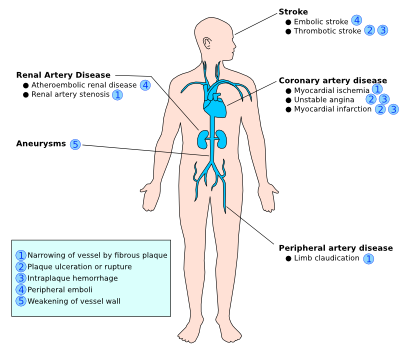Atherosclerosis
Chapter Atherosclerosis
Ronak Delewi, MD; Hayang Yang, MsC; John Kastelein, MD, PhD
A 53 years old man, without medical history or drug use, shows up in the family physician’s room and makes an anxious impression. His friend has recently suffered from myocardial infarction (MI) and he is worried that he might also face the same situation soon. As for family medical history, he has a father with hypertension and an uncle with diabetes mellitus. He doesn’t seem to have any symptoms or complaints at this moment, but he has been smoking for 25 years and is overweight. Due to these characteristics he is worried of having a high risk of getting a MI. During the physical examination, his BMI was 29, RR was 152/90 mmHg and heart rate was 75 bpm. The family physician orders a blood test for lipid profile and glucose. Both turn out to be in the normal range. The family physician gives the patient several advices concerning primary prevention for atherosclerosis; quit smoking, try to achieve weight reduction, do regular physical activity, restrict alcohol consumption to <10-30g/day and follow a varied and balanced diet. Regarding the hypertension, the advice is to keep his RR under 140/90 mmHg. Antihypertensive medication is not indicated at this moment, because his 10-years risk of death due to cardiovascular diseases (Systematic COronary Risk Evaluation) is lower than 20%. He is advised for regular checkups of cardiovascular risk profile or report to the doctor’s office in case of chest pain.
